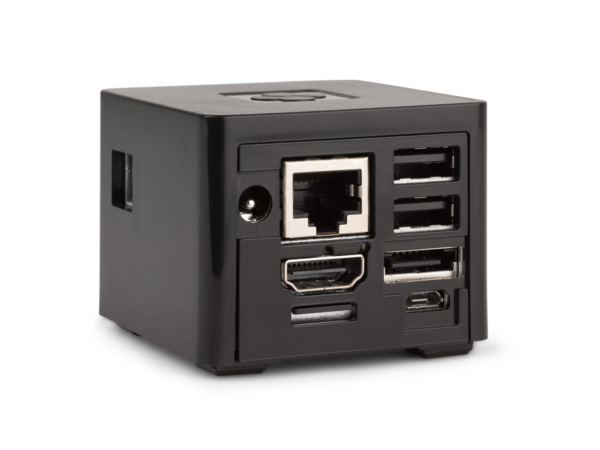Solidrun was the very first Firm who believed in us, and let me tell you: what a product they made!
Let’s face it: after the little Pi, the market is literally flooded with embedded single-board computers. That’s really good, because we can just choose the best one to fit our needs. But as a side effect, we just have too many to compare!
Now, let me be a little sentimental, for once: I just love Solidrun, they are the first firm we contacted back in the days of RaspyFi, and they believed a lot in RaspyFi’s (and Tsunamp\Volumio) vision. Besides that, what really matters is that the little Cubox is an awesome machine, packed in an incredible tiny form factor. That’s why I was mutually convinced we were going to see exciting stuff with SolidRun products.
 The new Cubox-i especially delivers lots and lots and lots of processing power, has plenty of connectivity and features also an optical S\pdif output. The range of cubox-i enables you to have a perfect Volumio companion which has the following key-points:
The new Cubox-i especially delivers lots and lots and lots of processing power, has plenty of connectivity and features also an optical S\pdif output. The range of cubox-i enables you to have a perfect Volumio companion which has the following key-points:
- Unprecedented WAF
- Up to 2gb of RAM, enjoy RAMPLAY as long as you wish
- Wi-Fi connectivity, on some models
- S\pdif out: for those of you who need that, no more converters
- E-sata connector
- IR remote receiver for LIRC fanatics
So, I’m very pleased to announce that Volumio for Cubox-i has been released, it is also compatible with the upcoming HummingBoard, and it features the latest updates both to WebUi and System. The combo Volumio + Cubox-i runs pretty well, it has an astonishing 20 seconds boot time, and the system is smooth and doesn’t have problems with big res files. Furthermore, it sounds awesome! (to find out some more, just scroll a bit…)
So, cubox-i owners and wannabe ones: to enjoy that, just download it here
Side note: I’m more and more convinced that Freescale’s Imx6 (the platform on which Cubox-i, UDOO and Compulab Utilite are based on) is the one which achieves the best audible performances. Of course, there are lots of factors involved in SQ, like the implementation and boards layouts. But I can feel that Imx6 products are somehow better sounding than competitors. Before you think I’m gone mad, I made also some measurements (jitter and integer resolution) which have confirmed this thought.
I could just suspect there are some bus optimizations that made this possible, or that 3.0.35 Freescale’s mainline kernel (all 3 boards use this older kernel, which is the only current supported one) is just better in audio related tasks. Furthermore, digging into kernel optimization, I found out that Imx6 features Hardware DSP support… Could be a clue…
Anyway, I’m just collecting my ideas on that, you’ll read a more exaustive article on the matter when I’ll have better assumptions to support my thoughts…
Let’s talk about that on Volumio’s Forum!

